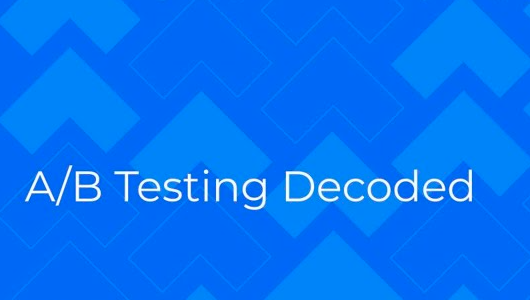A/B Testing Decoded: Designing and Analysing Experiments for Insights

Introduction
In the world of data-driven decision-making, A/B testing stands out as a powerful tool for understanding user behaviour and optimising various aspects of business operations. Whether you are looking to improve website conversions, enhance user experience, or optimise marketing campaigns, A/B testing can provide the insights you need to make informed decisions. If you are a business professional seeking to upskill, there is perhaps, no better option than acquiring A/B testing skills by enrolling for an advanced technical course such as a Data Analyst Course in Pune, Mumbai and such cities which includes coverage on this topic.
This article delves into the intricacies of designing and analysing A/B tests, offering a comprehensive guide for those looking to harness its potential.
Understanding A/B Testing
A/B testing, sometimes referred to as split testing, is a technique that compares two iterations of an app feature, website, or any other variable to see which one works better. It involves randomly dividing your audience into two groups: Group A (the control group) and Group B (the experimental group). Each group is exposed to a different version of the variable under test. By measuring the performance of each version against a predetermined metric, you can identify which version yields better results.
Read also: The implications of data privacy on businesses and consumers
Designing an Effective A/B Test
Before designing an A/B test procedure, you must do some groundwork to establish the aims and objectives of the testing exercise. Data analysts who have the learning from a Data Analyst Coursethat imparts training on A/B testing will follow a systematic workflow for A/B testing. Establish the following sequence of objectives before you proceed.
Define Your Objective: Before you begin, clearly define what you aim to achieve with your A/B test. Are you trying to lower bounce rates, boost conversion rates, or raise click-through rates? Having a clear objective helps in selecting the right metrics to measure.
Identify the Variable to Test: Determine what specific element you want to test. This could be anything from the colour of a call-to-action button, the layout of a webpage, the wording of a headline, or the placement of an image. To guarantee reliable findings, concentrate on one variable at a time.
Create Variations: Develop two versions of the variable – the control (A) and the variation (B). Make sure the component you are testing is the only thing that differs between the two versions. This isolation of variables is crucial for obtaining valid results.
Randomise and Split Your Audience: Randomly assign your audience into two groups to eliminate bias. This randomisation ensures that each group is representative of your overall audience, providing reliable results.
Determine the Sample Size: Figure out how many people must participate in each group in order to provide results that are statistically significant. Several online calculators can help you determine the appropriate sample size based on your expected effect size, desired confidence level, and statistical power.
Run the Test: Launch your A/B test and collect data over a specified period. Ensure that the test runs long enough to capture meaningful data and account for any fluctuations in user behaviour.
Analysing A/B Test Results
Correctly analysing A/B testing results is important to arrive at precise inferences.
Collect Data: Gather data on the performance of both versions. This data could include metrics such as click-through rates, conversion rates, time spent on page, and other relevant indicators.
Statistical Analysis: Use statistical methods to analyse the data and determine if the differences in performance between the control and variation are statistically significant. Common statistical tests used in A/B testing include the t-test and chi-squared test.
Interpret Results: Interpret the results in the context of your objective. If the variation (B) significantly outperforms the control (A), you can confidently implement the changes. If there is no significant difference, consider testing another variable or re-evaluating your hypothesis.
Document Findings: Document the results and insights gained from the A/B test. This documentation can serve as a reference for future tests and help in building a knowledge base for your team.
Best Practices for A/B Testing
Here are some best practises for A/B testing you can learn by enrolling for an advanced Data Analyst Course.
Test One Variable at a Time: Testing multiple variables simultaneously can lead to confounding results. Focus on one element per test for clear insights.
Maintain Consistency: Ensure that the only difference between the control and variation is the variable under test. Consistency in all other aspects is key to valid results.
Run Tests Long Enough: Allow your test to run for a sufficient duration to gather reliable data. Avoid stopping the test prematurely based on initial results.
Use Reliable Tools: Leverage robust A/B testing tools and platforms to design, run, and analyse your tests efficiently. Popular tools include Google Optimise, Optimizely, and VWO.
Iterate and Learn: A/B testing is an iterative process. Continuously test, learn from each experiment, and apply those insights to future tests for ongoing optimisation.
Conclusion
A/B testing is a valuable method for uncovering insights and driving improvements in various aspects of your business. By carefully designing your tests, rigorously analysing the results, and adhering to best practices, you can make data-driven decisions that enhance user experience and achieve your business objectives. Embrace the power of A/B testing and unlock the potential for continuous growth and optimisation. Some urban learning centres do offer a course in data analytics that covers A/B testing. You can, for instance, find a Data Analyst Course in Pune that will include lessons on A/B testing.
Name: ExcelR – Data Science, Data Analytics Course Training in Pune
Address: 101 A ,1st Floor, Siddh Icon, Baner Rd, opposite Lane To Royal Enfield Showroom, beside Asian Box Restaurant, Baner, Pune, Maharashtra 411045
Phone Number: 098809 13504
Email ID:shyam@excelr.com




